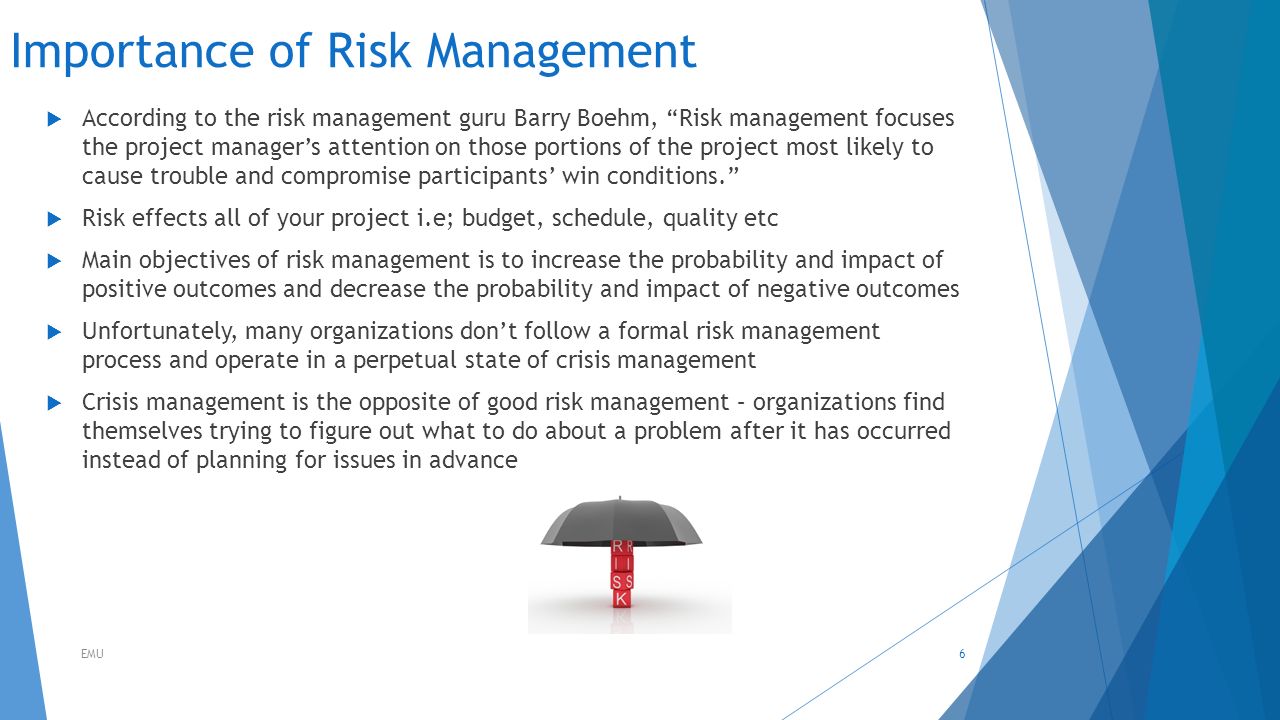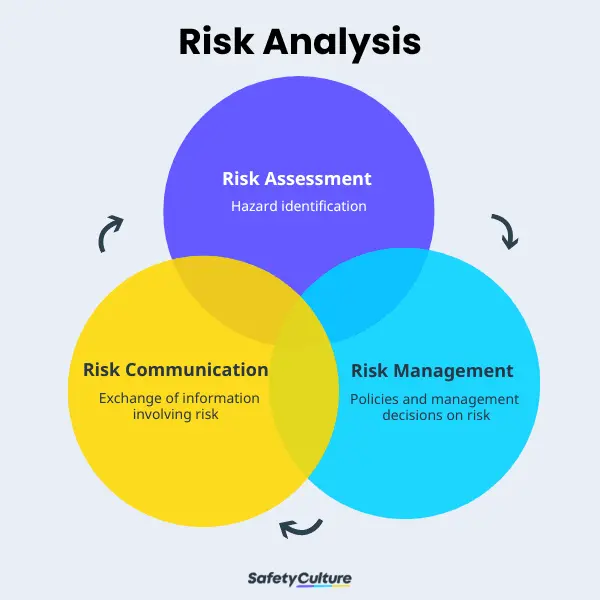Why the Importance of Risk Management Cannot Be Overlooked in Today’s Modern Economy
Why the Importance of Risk Management Cannot Be Overlooked in Today’s Modern Economy
Blog Article
The Essential Significance of Risk Management in Getting Business Goals
In the quickly evolving service landscape, the capacity to browse uncertainty has become an imperative. This is where Risk Management action in, offering a structured technique to recognizing, evaluating, and mitigating potential barricades to proceed. It's more than just a protective action - it's a strategic device, cultivating durability and technology. As we explore the important role of Risk Management in accomplishing organizational goals, one can not assist yet question: exactly how does this translate right into real-world success?
Comprehending the Principle of Risk Management in Company

The Important Function of Risk Management in Strategic Planning
Integrating Risk Management into tactical preparation functions as a safeguard for organizations, anchoring their long-lasting strategies with a strong foundation of preparedness and durability. It operates as the organization's radar, detecting prospective dangers and susceptabilities that could interfere with the path towards accomplishing their mentioned purposes. Risk Management supplies a framework for preparing for unpredictabilities and developing appropriate feedbacks, ensuring the organization's survival and prosperity also in the face of difficulty. By integrating Risk Management into tactical preparation, organizations can change these unpredictabilities right into possibilities for growth and advancement. This calculated interweaving of Risk Management fosters versatility, making companies much more durable and allowing them to browse the ever-changing business landscape with confidence. Risk Management comes to be an essential device in strategic preparation, crucial in securing lasting success.

Techniques for Identifying, Assessing, and Focusing On Threats
Navigating the complex landscape of threats needs the application of specific methods for their prioritization, assessment, and identification. The process starts with Risk identification, employing tools such as SWOT analysis, which assists in identifying possible dangers and opportunities. Next off, Risk evaluation is carried out to ascertain the potential impact and possibility of each Risk. Devices such as Risk matrices and impact-probability charts are used for this. Threats are prioritized based on their potential effect and possibility, allowing companies to concentrate their sources on high-priority dangers. This systematic method makes sure an extensive understanding of the Risk landscape, making it possible for companies to make informed choices and efficiently manage risks to accomplish their objectives - importance of risk management.
Securing Business Procedures With Effective Risk Management
In the organization landscape stuffed with unpredictabilities, efficient Risk Management plays a critical role in safeguarding business operations. It functions as a protective guard, alleviating the damaging impacts of browse around these guys prospective dangers and making certain the smooth functioning of all processes. By go to this site determining and analyzing possible dangers, Risk Management allows companies to establish durable backup strategies. This precautionary approach help in preserving functional stability, even when confronted with unforeseen situations. Fundamentally, Risk Management is the lifeline that maintains the business operations afloat amidst stormy waters. It makes sure not only the survival however the lasting development of an organization, making it a crucial tool in attaining service objectives. Companies must invest in detailed Risk Management techniques to safeguard their procedures.

Transforming Prospective Dangers to Opportunities: The Power of Risk Management
While prospective hazards might originally look like obstacles to business success, effective Risk Management can transform them into opportunities. An aggressive technique to risk Management entails identifying, evaluating, and focusing on risks to design techniques that transform them into prospective advantages. This process necessitates the development of a risk-aware culture within the company, motivating people to watch dangers as potential stimulants for adjustment and growth, as opposed to plain threats. importance of risk management. Through this lens, possible risks come to be possibilities to introduce, enhance procedures, and strengthen resilience. Hence, by leveraging the power of Risk Management, companies can not only guard their operations yet likewise spur growth and accomplish their objectives in an unpredictable organization setting.
Instance Studies: Success Stories of Risk Management Driving Business Objectives
Successful application of Risk Management strategies has actually generated impressive lead to numerous companies, highlighting the advantages of this method. Multinational companies like Microsoft and Google, for instance, have leveraged Risk Management to minimize dangers and make use of possibilities, driving their company goals ahead. Microsoft's aggressive Risk Management method helped it pivot swiftly throughout the 2020 pandemic, learn the facts here now transitioning to remote work smoothly, thus preserving productivity. Google, by evaluating and reducing potential dangers in its cloud-based services, has actually ensured nonstop solution, consequently enhancing consumer count on. These examples highlight exactly how effective Risk Management can not only guide services clear of prospective challenges yet likewise lead them towards their tactical purposes. Hence, Risk Management is important to the search of business goals.
Verdict
In conclusion, Risk Management is fundamentally important in accomplishing organizational goals. By incorporating Risk Management right into strategic preparation, services can much better browse unpredictabilities, safeguard operations, and capitalise on chances, thereby straightening with lasting goals.
At its core, Risk Management is the process of determining, analyzing, and dealing with potential dangers that could negatively impact an organization's operations or objectives. Next, Risk assessment is conducted to establish the possible effect and likelihood of each Risk. Risks are focused on based on their prospective impact and likelihood, allowing organizations to focus their sources on high-priority dangers. By recognizing and examining prospective hazards, Risk Management makes it possible for organizations to develop robust contingency plans. A proactive method to risk Management entails identifying, analyzing, and focusing on risks to devise strategies that transform them into prospective benefits.
Report this page